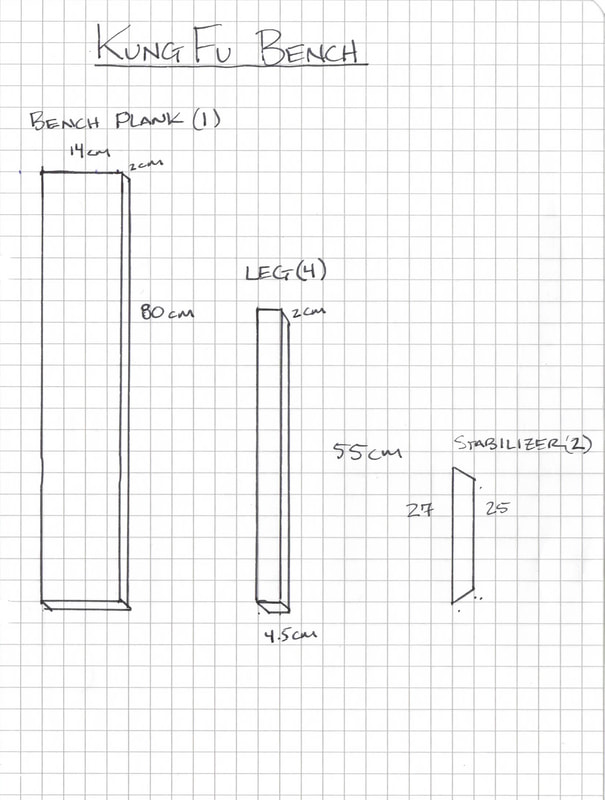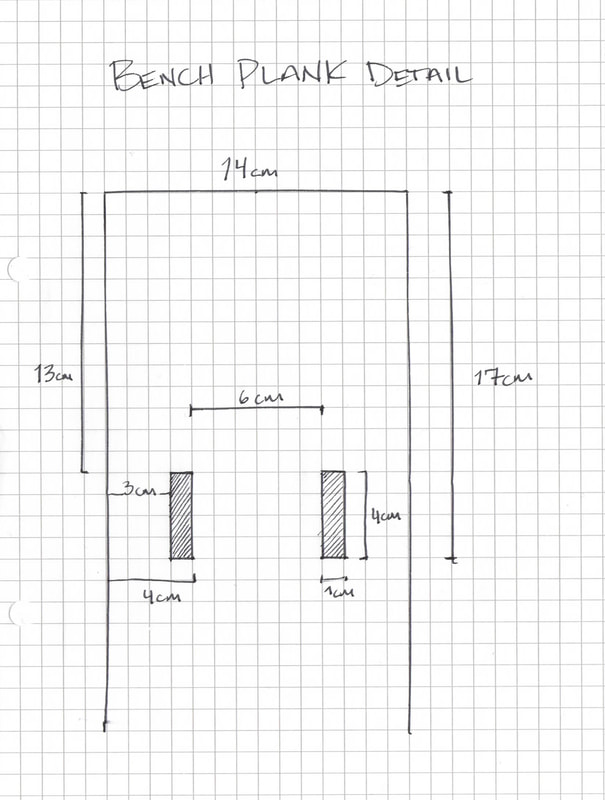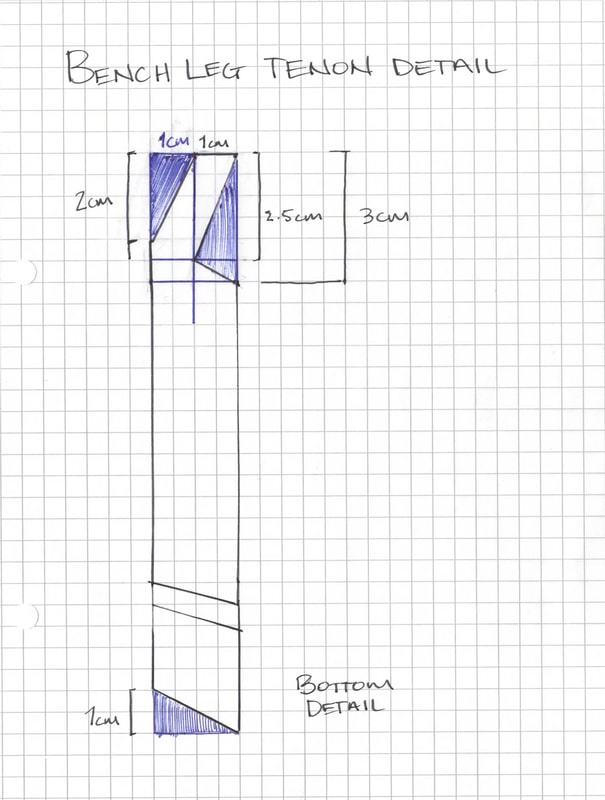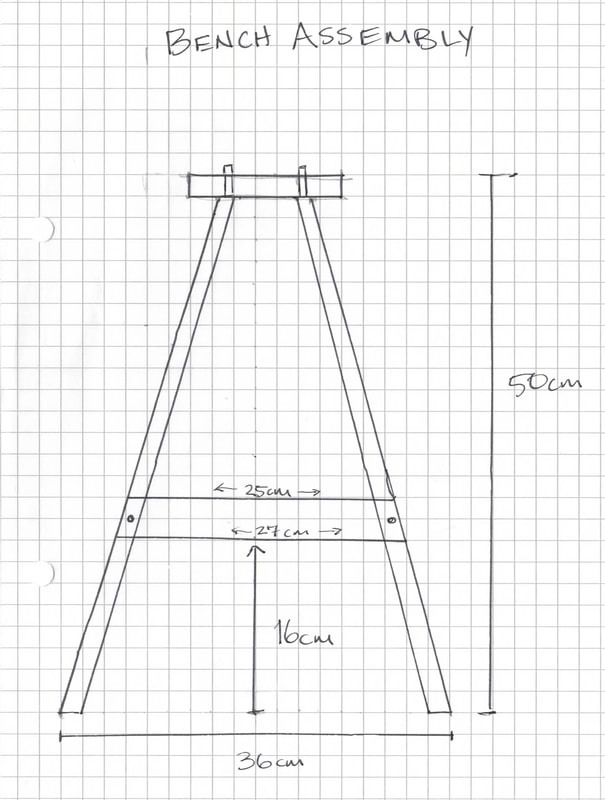|
2021 started with a big jump as I just went live with a second YouTube Channel. Yes, a second Channel. On the creator side, it is a bit daunting as I am starting from scratch with 0 views, 0 comments, 0 likes (or dislikes), and 0 subscribers. However, I feel it to be necessary to bring the right content to the right people.
You see, I've been looking at release schedules and topics and I have noticed that although there are viewers that enjoy the variety of topics I post, there is a very large imbalance when it comes to the frequency of Kung Fu and Tai Chi video releases. So on one end, if someone is only subscribed to me for kung fu content, they will skip a week when a tai chi video shows up, or if they subscribed to me for Tai Chi content they have to wait to upwards of a month between videos, and that had to change! Here it is: Tai Chi with Sifu Kuttel https://www.youtube.com/channel/UCz3AudQggEnR1_XVejPWJdw What can we expect from both channels? My main channel will continue the weekly video schedule with releases on Thursdays however, all the content will be Choy Li Fut related. For 2021 our focuses will be: Kung Fu Combo, 3 Section Staff, 2 Section Staff, Staff, Gim (straight sword), and some stretching/Choy Li Fut footwork +/Forms videos too. Tai Chi with Sifu Kuttel will be exactly that, with a 3 video per month release schedule and new videos posted on Tuesdays it will bring more content to the Tai Chi viewers without having to wait through the kung fu videos. The Tai Chi Channel will have Tai Chi Connection, At Home Tai Chi Training, Tai Chi Fan, Tai Chi Flute, and Tai Chi Jian techniques and training. So although it is starting over from scratch, I think it's the right step in bringing consistent content for lovers of kung fu and tai chi, and the best part is for those who enjoy both, you get two videos a week! And if you are a part of my Patreon, with new videos every Wednesday, you'll have 3 videos a week and no repeats!!! So feel free to check out the new channel and let me know what you think!
0 Comments
One of my favorite concepts when it comes to knife fighting is “De-fanging the snake,” which like it sounds means you don’t need to fear the bite if it ain’t got fangs. How it translates into knife fighting is, take away the opponent's knife and you gain the advantage.
The basic way of De-fanging the snake is to attack the knife hand. Infact, most people will go as far to say that the fight is pretty much won once the hand has been hit. So after last Mondays visit to the ER and a handful of stitches later (get it?), I would like to revisit this concept with a bit more experience in the field. *Now I have to put a disclaimer out as this was only my experience and each situation presents a completely different set of variables so it could go any which way depending on the severity of the cut/s. I took a direct and full force stab to the hand that went clean to the bone, though no tendons, ligaments or major veins were severed so I came out of it very lucky… 5 hours later… I recall hearing about how once the hand is cut, it will bleed out quite fast and the body will go into shock, there’s a good chance that the tendons and nerves will be damaged and the knife will no longer be able to be held resulting in a quick shifting of advantage. For me that was not the case, I was able to put my knives away, step out of class, clean up the wound (which wouldn’t stop bleeding), change out of my uniform and walk home to try to super glue it up (which didn’t work) before feeling any signs of going into shock. Infact, I never lost any dexterity throughout the situation, and shock made me feel a little queasy at its worst. I ended up using a rubber band as a makeshift tourniquet, wrapped it with a paper towel and drove myself over to the ER, pissed off at the whole situation. Now as the ER is famous for, I spent the next 5 hours waiting on stitches so I had plenty of time to think this over. And here’s what I concluded: The Lesson: Yes, the concept of de-fanging the snake is sound. However, you cannot treat your training like point sparring or tag with the first strike automatically winning. You must keep the long term of the exchange in mind and continue to follow through in combinations rather than single movements. Use caution as if it could end with one strike, but should you make contact, continue your advance until victory is certain. Do not waste the effort it took to close in by withdrawing prematurely, rather use your advance to your advantage. If you are not for or competing in a point match, move cautiously and in combinations and keep my experience in mind… and never misjudge your distance. *This is a repost from my Tumblr originally posted October 2015 The old way that push hands is typically taught is as a chain of techniques, each as a counter to the last technique. An intricate strand of countless responses in neutralization, redirection, and counter pushes. Each response is logical to the specific situation, although as consequence to the increase of consecutive situations, the earlier techniques become buried and forgotten. Often times similar responses to advances are standardized to one response, and all others discarded as less useful.
Such is life, we tend to find ourselves dealing with chains of situations, choices and options by defaulting to the responses and techniques that more often work for us based on our experiences and outcomes, whether they are the best for us or not. Sometimes the convenient response is all we need, but there are times we should seek to address the situation as unique as it presents itself. To specifically, impeccably, deal with it. Maybe we can better ourselves and others with a calculated approach, but then again, maybe it should be more simple than that. * This is a repost from my Tumblr, originally posted Sept. 2016 Enjoy your meal, and don't forget to workout!
You can download the GIF or PSD file over at the Teaching Resources page. Invest yourself to more than something you “do” twice a week.
Allow yourself to become frustrated, stagnant, and hit ruts, but always find a way to overcome them, they are but obstacles on the journey and sometimes it takes a shift of perspective to get around them. Make friends and training partners, but do not let the absence of either hinder your progress. Learn the skill of how to practice effectively on your own, away from the school. To study is more than mindless repetition at various speeds. Keep your head in the game when you work out and save distractions for later. If you are going to take the time to do something, do it as best as possible. Time is precious, especially the few moments you get for yourself. Trace your roots, find out where your art came from. You’ll begin to see why you do things the way you do. Be respectful of other styles, though someone else’s technique is not the way you learned, it does not mean that it is incorrect in that persons school. Rather than making judgements from watching brief moments of other arts, do your research. Read up on other arts, you will find out why they focus on specific material and what concepts they are training. Use competition for learning, see how you handle under pressure and against different skill sets and training methods. You are not in a race, so do not compare yourself to others. Be patient with beginners, everyone was a beginner at some point. Be patient with beginners with other backgrounds, you know which ones, they are just trying to be acknowledged for their prior achievements. You are not as good as you think you are, never stop improving. Be mindful of other students, you do not know what they are going through at that exact moment in their life, and don’t expect them to know what is going on in yours either. Never be afraid to ask a question, but first seek the answer out yourself. Understand that there is going to be a counter to a counter to a counter… Where there is movement, there is vulnerability, there will never be a perfect technique. There will always be a “what if” when learning a technique but you need to get a solid grasp of the basics before pursuing tangents. Be the martial artist that others look up to. Skill is not in what you wear, be unquestionable in your ability whether you have a belt on or not. A year will not make you a master, foundations are best built over time. Be patient and enjoy the process, you will still have “aha!” moments even after decades. Always go back to the basics, most answers can be found in the fundamentals. Explore your art, and translate it beyond the scope of punching and kicking, applications can be found in most any aspect of your life. Never ever stop learning. *This is a repost from my Tumblr originally posted December 2015 Ging Lai - Respect
The kung fu salute or ging lai is a symbol of respect within the martial arts. Here's an animated GIF I created that you can feel free to use on your social media by either downloading from this post, or sharing directly from https://tenor.com/view/gif-19245866
Have fun, and respect! I know my views and beliefs may ruffle some feathers in the traditional world, but they are simply my own. It is not my intention to attack any art or methodology of teaching. I am simply voicing my observations and experiences.
First off, I do believe that tai chi is a very valuable art for fighting. However, I have noticed that tai chi for fighting is rarely taught, and the furthest most schools go into application is in push hands or very low energy applications. That's fine, I have no problems with people only doing it for health reasons as it is an excellent way to satisfy those needs. I also don't mind those who exclusively play push hands, that's great, it's a great way to understand balance, force, and energy (in scientific terms, not mystical energy). But here it is: Exclusive tai chi forms training will not make you a fighter. Being a push hands champion will not make you a fighter. Tai chi for health, will not make you a fighter.... What I personally believe is that for any tai chi practitioner who wants to learn the art for fighting, must first learn the basics of fighting. Yes, punches and kicks, fast punches and kicks. Then, not only will the practitioner have a better understanding of movements in combat applications, they will value the aspects of training and have more substance when moving slow. It really doesn't matter what style is done before hand, whether it is a kung fu style, kickboxing, karate, wrestling, or any other combat based art, but the basics of combat should be learned and understood. Only then can the student actually elevate their skills with tai chi training. Even the push hands experience will be more beneficial if they understand the fundamentals of fighting. That will lead a lot of people to deny the fighter of their tai chi training and say that they only use their base fighting art in the ring. And it's true that they will throw exponentially more jabs than full tai chi techniques like Grasp Bird's Tail. However, the moment that there is an opening, the tai chi fighter can use a text book movement, and effectively if they train it properly. The rest of the fight will be punches and kicks, no matter how you label it, because punches and kicks are the fundamentals of combat. Tai chi for fighting is a secondary pursuit, like choosing a grad program after fulfilling undergrad requirements. So don't expect to see slow movements in the ring to prove it is tai chi, or fancy hand positions after completing a technique unless the opponent is completely knocked out because posing wastes valuable ring time. Lastly, don't write off tai chi as a fighting art... as long as it is properly trained. And if you are looking to use tai chi more effectively, start with some combat basics. Go find a trainer, hit some mitts, work the heavy bag, drill fundamentals and yes spar. You don't have to go as far as sanctioned fighting but you should put in some good hours of sparring. And even when you do put your efforts into tai chi training to elevate your skill, you will need to occasionally spar to put your new lessons into practice. For instructors that want to teach the combative side of tai chi, make your students punch and kick things, pair them up and have them do mittwork or technique drills, have them spar regularly. Do your research too, not every technique application you were shown is the only way of doing it. Explore for yourself and see if you can apply the technique in a striking/standing grappling/wrestling/counter attacking context. Good luck, and train smarter! 長橋櫈 - Kung Fu Bench Over the years, many people have asked for kung fu bench measurements and plans. Though I did have measurements, I did not have exact measurements for the mortise and tenon joinery. About 15 years ago I built over a dozen benches using metal construction brackets to secure the legs, and although they held pretty well, it was a very low grade version of the bench in comparison to the benches at Doc-Fai Wong Center that were built by a cabinet maker. So finally, I decided to take the time and practice mortise and tenon joinery and build a bench right. Here's the YouTube video of my process (failures included). In the end you can always modify it to meet your needs. My next bench will be about 10-20cm longer for easier rolling and I will adjust the leg holes on the bench plank according to the new length. Materials and Cut List I used pine, and it actually held up surprisingly well! However, I'd suggest an using a hardwood like maple, bass, or oak. Bench Plank Detail Leg Tenon Detail This was the most difficult part of the process, so I suggest first using a spare piece to test your measurements and angles, and I also recommend cutting your legs to length after you cut the tenon and test it in the mortise. Bench Assembly
When working with a partner during a technique or drill, I’ve found that students commonly make it only one sided. One student will attack ridiculously slow and exaggerated, often off angle to the point where the defending student wouldn’t need to do anything and still be able to avoid the attack. This is really bad training for them as they won’t actually learn the important parts of the technique like reaction speed, angle, distance and especially timing. Even more so it is a total waste of time, not just for the one partner working on the defense, but both sides will get nothing out of it…
*Before I go any further, know that safety is important when drilling because you cannot be expected to pull something off at full speed and intention after seeing it only once. A space cushion is usually the best practice and yes slowing down the punch a little in the beginning can help too, however the speed must be increased as the students get the hang of it to help work into real-time application. **Now this can turn into a really long essay with various tangents, but I’m going to keep the focus of this solely on the attacking side. Remember, when you are punching (or whatever attack you initiate) you are training too. To throw an empty punch is not only ill-preparing your partner to deal with real-time and aggressive attacks, but you are also wasting your time and energy when you could take advantage and improve your technique. When you initiate your attack, go through the checklist of what your instructor looks for when the fundamental technique is taught. Is the stance correct, did you step, were you supposed to step, are the hips being used, is the waist turning, is your guard up, are you telegraphing your strike, is your chin down, are you too tense, are you too relaxed, are you striking at the best distance/angle???? That’s right, you can improve yourself while training others. Now, I a not saying you should be a jerk to your partner and change up your attack just to make it successful, I’m asking you to improve the elements of your technique to make it more efficient for when you actually use it. This will benefit both you and your partner so next time you train, train smarter and harder! *This is a repost from my Tumblr originally posted August 2015 The most effective martial art…
When we run into the age old debate of which martial art is effective or who’s better than who, we often leave out one of the most important components, context. Context will either place a valid martial art (applicable in combat and more…) as incomplete or ineffective when comparing it generally to another completely different contextual art. Like for example, saying Iaido is useless in the cage. This is not an untrue statement, if you took the sword out of their hands and dropped them into a cage match and rang the bell, I don’t think they can adapt to the guy who has spent hours of training in the cage. However, put the sword back in their hands in the cage and you’ve got a completely different picture, and a morbid one at that. Simply put, those two are not made to be in competition with each other, not to mention MMA is a mixture of martial arts, selecting what’s best for in the ring, which easily translates over to what is necessary in most other types of fighting. Since there’s no swords in the ring there’s no need for fighters to learn the weapon. With that said, it also doesn’t mean that training with the weapon wouldn’t benefit them either. Whether it is heightened focus, or a more in-depth understanding of distance and angle, with the right mindset and serious training, the martial artist can benefit from all sorts of training. Another way context is missed is when an art has a specific type of training, like push hands, or chi sau, that can be misunderstood by the general public. It’s usefulness can also be completely misunderstood internally and schools their students will devote their entire training to excel at that particular drill. This again, is really not a bad thing, one learns many lessons on the journey to mastery whether it be of movement or interaction, so a benefit will be there. However, such a hyperfocus removes the big picture of combat. This results in a student believing in techniques that work at a particular speed or forum to be universally effective which can be very dangerous. Take, for example, compliance when drilling joint locks. Compliance keeps both martial artists safe, but the lack of aggressive tension and spontaneous movement from Uke can leave Tori a variety of other available attack variations. Tori can explore, but will most likely find that there are a lot less options when Uke is trying to get out of a lock, fight a throw, or aggressively strike back. Looking at it that way makes it seem like the training is unrealistic an invalid, but it is not. Compliance training, Uke and Tori, those are important to help a martial artist recognize options in the heat of the moment. Push hands and chi sau allow the martial artist to read an opponent after making contact, to better prepare them for those moments in the scuffle.They each possess a specific piece of combat in them. All are valid, but at the same time cannot be compared to each other. Each is a piece of the puzzle, some will fit easily into the big picture, some need to ease into place, and others need to be forced or modified to fit, but all go back to the same big picture, and a pretty nice one if you ask me. So instead of comparing art to art, drill to drill, look at the context and try to connect it to the big picture. You will find we’re all moving in the right direction. *This is a repost of a Blog I wrote on my Tumblr October 2016 |
Sifu Kuttel
Thoughts, memories, lessons and the little tidbits of martial philosophies I stumble upon along my journey. Archives
February 2022
Categories |
Sifu Brian Kuttel 2024






 RSS Feed
RSS Feed